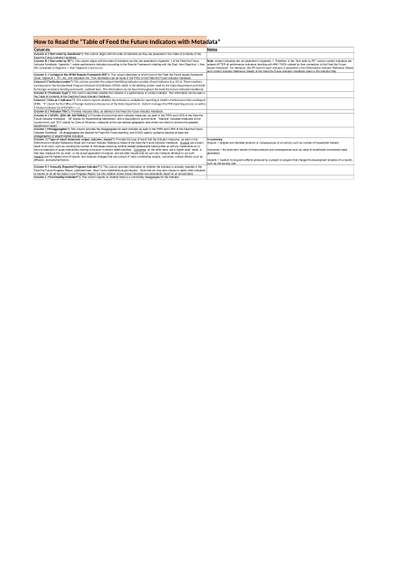Feed the Future Publications
15 Issues in this Publication (Showing 11 - 15) Previous
Global Food Security Strategy Activity Design Guidance
Increased sustainable productivity drives agriculture-led economic growth throughout the global economy, but it is particularly important for the local economy, creating new on- and off-farm employment opportunities, including for women and young people. Accelerating productivity growth and making these gains more efficient is critical to addressing Feed the Future’s topline goals of reducing food insecurity, malnutrition, and poverty. Productivity growth is multifaceted, including increased yields,resource-use conservation, reduced postharvest loss, market efficiency, and value addition. Greater agricultural productivity can enhance demand for locally produced goods and services; increase availability and affordability of safe, nutritious foods; and improve profitability throughout the entire agriculture and food system, allowing households to build assets to strengthen resilience to market,climate, and environmental shocks and stresses. Incorporating the concept of sustainability means considering impacts and tradeoffs among productivity, human, social, economic, and environmental outcomes.
Sampling Guide Beneficiary Based Surveys - Feed the Future
BBSs are conducted among a sample of a project’s direct beneficiary population.1,2 This is in contrast to population-based surveys (PBSs), which are conducted among a sample of the entire population living within a project’s area of coverage. Typically, PBSs are used in the Feed the Future context for baseline studies, interim assessments and midterm and final performance evaluations to monitor progress and to see if there has been change over time at the population level in key outcomes and impact indicators. In contrast, BBSs are typically used in the context of project monitoring to ensure that project implementation is rolling out as expected and that project interventions are on track for achieving their intended outcomes and targets in the direct beneficiary population. The results of such monitoring exercises can be used to inform decisions about project strategies and to make corrections to project components if monitoring data show that they are not on track.
Feed the Future and Conflict Integration: A Toolkit for Programming - 20.05.2023
This toolkit is a groundbreaking effort to ensure all investments under the United States Government’s Global Food Security Strategy integrate conflict. The better we understand the connections between conflict and food systems, the better we can meet the goals of the Feed the Future Initiative while also contributing to a more peaceful world. Fragility, conflict, and violence (FCV) can easily undermine progress under Feed the Future, but there are steps we can take to mitigate these dynamics and capitalize on opportunities for peace throughout our programming.
USAID Conflict Integration Guide 2023 - 20.01.2023
The Global Food Security Strategy calls for the enhanced integration of conflict sensitivity,
peacebuilding, and social cohesion into Feed the Future (FTF) programming. This guide provides
key takeaways and resources from throughout the USAID program cycle on how to meet this
goal.
FTF programs, like all development programs, inescapably shape the political economy and conflict dynamics where they work. Conflict-blind programs—those that do not recognize and plan for this interaction—run the dual risk of doing harm and undermining their intended development gains. But when USAID staff integrate a conflict sensitive lens, FTF programming can minimize harm, create powerful opportunities for peace, and ultimately achieve Feed the Future goals around building resilience and reducing poverty and malnutrition.
“Conflict sensitivity” is a familiar term for many USAID professionals. It typically focuses on
program-level impacts and the ability to minimize harm while promoting opportunities for peace.
“Conflict integration” is the next step in the process. It seeks transformative change by reshaping
the shared dynamics underpinning conflict and insecurity across strategies, portfolios, activities,
and everyday actions.
This guide describes these key concepts, outlines critical considerations through the program
cycle, and provides real-world examples.




